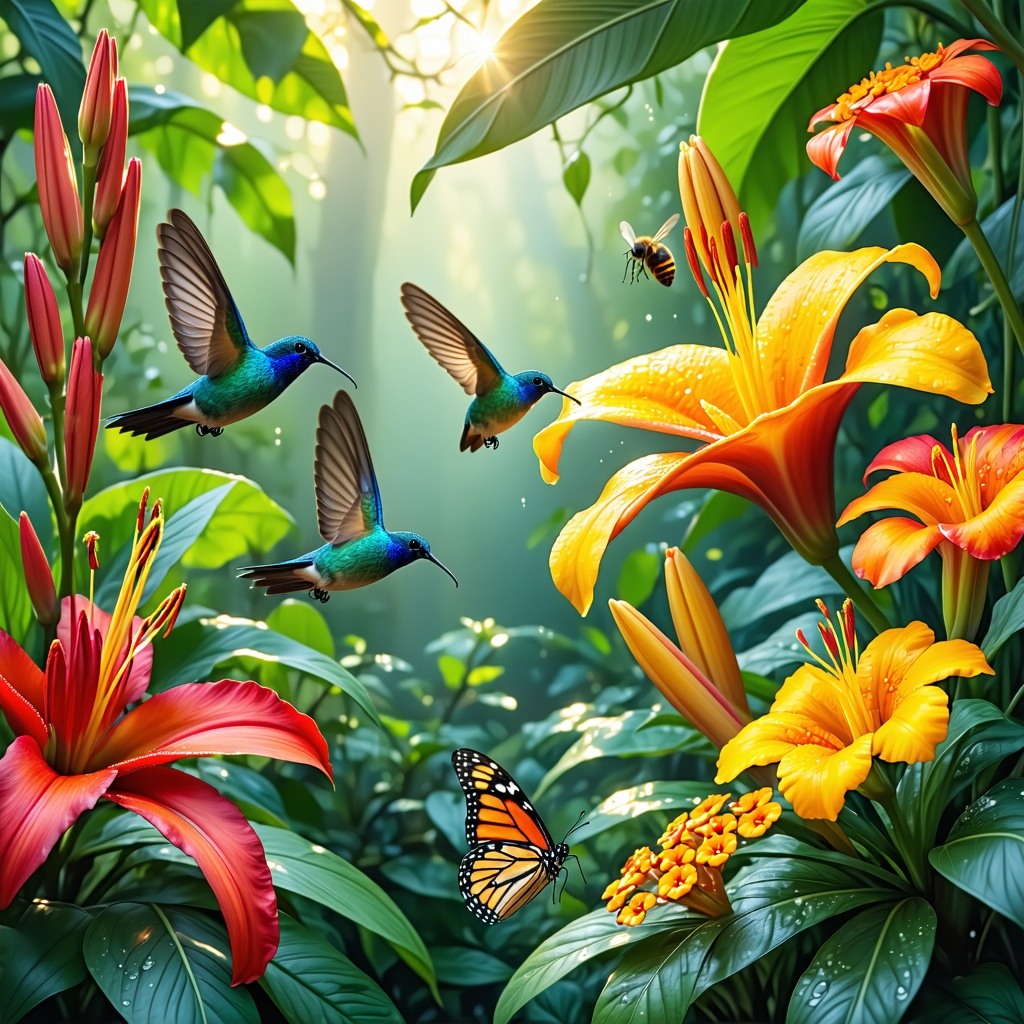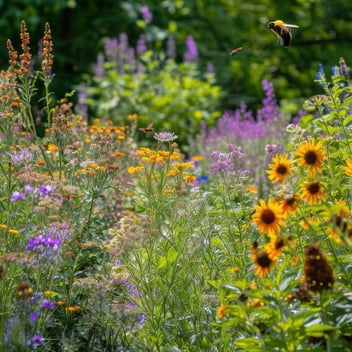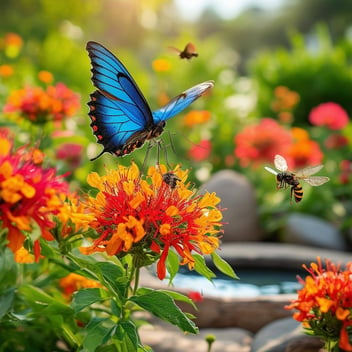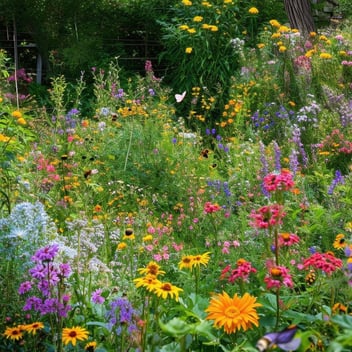The Power of Pollen: Understanding Pollination in Tropical Gardens
Introduction
In the lush tapestry of tropical gardens, pollination stands as a pivotal process, orchestrating the reproduction of a myriad of plant species. This intricate dance between flora and fauna not only ensures the perpetuation of plant lineages but also sustains the vibrant biodiversity characteristic of tropical ecosystems. Grasping the nuances of pollination unveils the profound interconnectedness within these habitats and underscores the importance of preserving such natural symphonies.
Diversity of Pollinators in Tropical Regions
Insects: Bees, Butterflies, Beetles, and Flies
Tropical gardens are abuzz with a plethora of insect pollinators. Bees, with their insatiable quest for nectar, inadvertently transfer pollen grains, facilitating fertilization. Butterflies, drawn to vibrant blooms, play a similar role as they flit from flower to flower. Beetles, among the earliest pollinators, engage with flowers in their search for food and mates, while flies, often overlooked, contribute significantly, especially in pollinating certain specialized plants.
Birds and Mammals: Hummingbirds, Bats, and Rodents
Beyond insects, various birds and mammals partake in pollination. Hummingbirds, with their iridescent plumage and rapid wing beats, are adept at accessing nectar from tubular flowers, effecting pollination in the process. Bats, particularly in nocturnal settings, pollinate flowers that bloom at night, drawn by their scent and pale coloration. Even certain rodents have been observed contributing to pollination, highlighting the diverse array of pollinators in tropical regions.
Mechanisms of Pollination
Biotic Pollination: Interactions Between Flora and Fauna
Biotic pollination involves living organisms as vectors for pollen transfer. Flowers have evolved specific traits to attract their preferred pollinators, leading to specialized relationships. For instance, the Amazonian water lily (Victoria amazonica) employs a unique mechanism where its flowers trap beetles overnight, ensuring effective pollination before releasing them the following day.
Abiotic Factors: Wind and Water Pollination
While less prevalent in tropical gardens, abiotic pollination—mediated by wind or water—does occur. Certain tree species release copious amounts of lightweight pollen grains into the air, relying on wind currents for dispersal. Similarly, some aquatic plants utilize water to transport pollen, though such mechanisms are more common in temperate zones.
Plant Adaptations to Attract Pollinators
Floral Morphology and Coloration
Plants have developed an array of structural adaptations to entice pollinators. The shape, size, and color of flowers often correspond to the preferences and physical characteristics of their primary pollinators. For example, red, tubular flowers are typically associated with bird pollination, as these hues and forms are particularly attractive to avian species.
Nectar Production and Scent Emission
Beyond visual cues, many plants produce nectar, a sugary reward that lures pollinators. The scent emitted by flowers also plays a crucial role; strong, sweet fragrances often attract nocturnal pollinators like bats and moths, while daytime pollinators may be drawn to subtler scents. These olfactory signals ensure that flowers are visited by the appropriate pollinators, enhancing reproductive success.
Challenges Facing Pollination in Tropical Gardens
Impact of Climate Change and Habitat Loss
The delicate balance of pollination networks faces threats from climate change and habitat destruction. Rising temperatures and altered precipitation patterns can disrupt the synchrony between flowering times and pollinator activity. Additionally, deforestation and urbanization lead to habitat fragmentation, reducing the availability of resources for pollinators and potentially leading to declines in their populations.
Decline in Pollinator Populations
The combined pressures of environmental change, pesticide use, and disease have contributed to a noticeable decline in pollinator numbers. This reduction not only affects plant reproduction but also has cascading effects on entire ecosystems, given the foundational role of pollination in food webs. Addressing these challenges requires concerted conservation efforts and sustainable practices.
Cultivating Pollinator-Friendly Plant Species
To enhance pollination within tropical gardens, the strategic selection of flora that entices and supports pollinators is paramount. Incorporating a diverse array of plants that bloom at various times ensures a consistent food source for pollinators throughout the year. Notable examples include:
-
Canna Lilies (Canna spp.): These vibrant perennials, with their large, colorful blooms, are highly attractive to hummingbirds and butterflies. Thriving in full sun and moist, well-draining soil, canna lilies add a tropical flair while supporting local pollinator populations.
-
Cape Honeysuckle (Tecomaria capensis): An evergreen shrub known for its bright orange to red tubular flowers, cape honeysuckle is a magnet for hummingbirds, butterflies, and bees. It flourishes in full sun to partial shade and is drought-tolerant once established.
-
Lantana (Lantana camara): Celebrated for its clusters of small, vibrant flowers, lantana is a resilient perennial that attracts a multitude of pollinators, including butterflies and bees. It prospers in full sun and well-draining soil, offering continuous blooms throughout the growing season.
By integrating such species into the garden, one not only enhances its aesthetic appeal but also creates a hospitable environment for essential pollinators, thereby promoting ecological balance and biodiversity.




